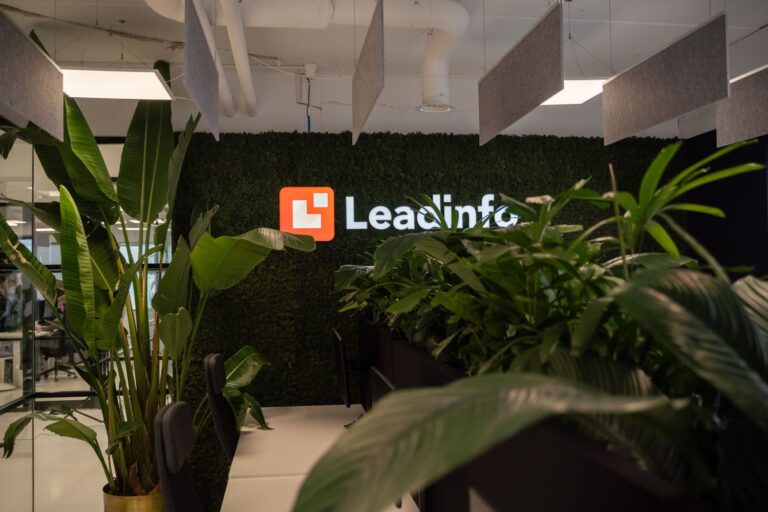There’s a lot of confusion around the terms demand generation versus lead generation. Some people even use these two terms interchangeably. Yet demand generation and lead generation are two separate concepts with their own set of activities. In fact, they target two different moments in your sales funnel. But you should use both to achieve results.
So let’s discuss the differences between these concepts and how you can use both strategies to grow your business.
What is demand generation?
Demand generation is the process of casting a wide next to attract as many potential customers as possible and introducing them to your company. The aim? To raise your brand awareness and create interest in your products or services.
More specifically, demand generations a top-of-the-funnel marketing strategy meant to help you expand your reach, generate buzz and drive traffic towards your website to build interest.
Below are a few examples of activities which might be part of your demand generation strategy:
- Blogging, more specifically SEO optimised content
- Guest Posting
- YouTube videos
- Events (live or virtual)
- Social media marketing
- Influencer marketing
Take your demand generation efforts to the next level!
Leadinfo is a tool that identifies your B2B website visitors. See in real-time who visits your website, their medium and the pages they browse. Enabling you to measure if your efforts are paying off and you’re attracting the right audience.
What is lead generation?
Lead generation is the process of turning users into qualified leads (qualified leads are people who have shown interest in your offering and meet specific criteria). How can you achieve this? Using various nurturing techniques, sales and marketing teams work together to move potential customers down the sales pipeline. The aim? Engaging your target audience to the point that they want to give you their contact information.
Because your efforts are targeting people who are already familiar with your company, lead generation is more focused on middle to bottom of the funnel tactics.
Here are a few examples of common lead generation strategies:
- Gated content which requires a user to provide their email address to access it
- Dedicated landing pages
- Client success stories
- Email marketing
- Webinars
Check out our 7 tips to boost your lead generation efforts for more lead generation strategies.
What’s the difference between lead generation and demand generation?
So how do the two concepts differ? For starters, their objectives differ as each targets two different moments of the sales funnel. Demand generation helps you grow by making more people aware of your business, and lead generation enables you to convert by nurturing leads from warm to hot leads.
These concepts also differ in their strategies. Demand generation provides people with free information to build brand trust and authority. However, lead generation aims to capture a user’s information using gated and more personalised nurturing techniques.
And because both concepts have different goals, this means they also require resources and metrics to define success.
How to use demand gen and lead gen together to further your B2B sales efforts?
Imagine you create a strong piece of gated content for your lead gen efforts. Without demand generation, who will come to your website and share their email address? Few people would feel comfortable doing this for a brand name they have never heard of. So it’s important to use demand generation and lead generation together and in sequence for optimum results.
However, before you launch any new initiatives, ensure that you have a clear buyer persona. This will help you define the kind of content your audience is interested in.
Demand generation
Once you know who you’re trying to reach, it’s time to increase your online reach and brand awareness using demand generation techniques.
Demand generation strategies and campaigns are rooted in content marketing. You’ll want to create free content which provides value to the reader and positions you as a leader in the industry.
You can do this via blog posts, infographics, podcasts, YouTube explainer videos or live talks, which you can then advertise or share snippets of on social media.
Lead generation
Your content will attract many people to your website, and some will be intrigued enough that they will want to know more. This is where lead generation comes in. You’ll need to provide users with different content and initiatives to further nurture them, build up trust and entice them to share their contact details with you.
Because once you have their email address, both sales and marketing have a direct line of communication with a potential customer. Making it easier to engage with them one on one.
Lead generation content is more targeted. It aims to answer specific questions or address a specific challenge, highlight previous success, and capture contact info for a sales follow-up. Whitepapers, on-demand webinars and newsletter sign-up forms are all different techniques you can use to capture a lead’s information.
Match your demand generation and lead generation efforts to your B2B sales strategy
Demand generation is about reaching new companies and lead generation is about building up enough trust that they feel comfortable sharing their contact information.
Both strategies involve knowing your target audience, establishing brand credibility and being able to speak and address your customer’s challenges via different forms of content.
To take your efforts to the next level and support your business goals, match your demand and lead generation efforts to an overarching B2B sales strategy. Doing so will ensure that you support your ultimate goal: driving companies towards your website and converting them into high-quality leads and loyal customers.


